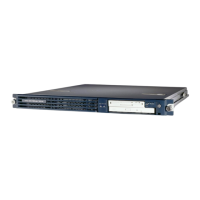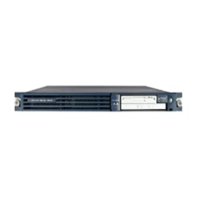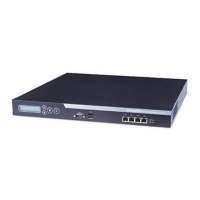Appendix D CSUtil Database Utility
CSUtil.exe Options
D-4
User Guide for Cisco Secure ACS for Windows Server
78-16592-01
• -i—Import user or AAA client information from a file named import.txt or
a specified file. For more information about this option, see Importing User
and AAA Client Information, page D-15.
• -l—Load all Cisco Secure ACS internal data from a file named dump.txt or
named file. Using this option requires that you stop the CSAuth service. For
more information about this option, see Loading the Cisco Secure ACS
Database from a Dump File, page D-11.
• -n—Create CiscoSecure user database and index. Using this option requires
that you stop the CSAuth service. For more information about this option, see
Creating a CiscoSecure User Database, page D-8.
• -p—Reset password aging counters during database load, to be used only in
conjunction with the -l option. For more information about this option, see
Loading the Cisco Secure ACS Database from a Dump File, page D-11.
• -q—Run CSUtil.exe without confirmation prompts.
• -r—Restore system from a specified backup filename. For more information
about this option, see Restoring Cisco Secure ACS with CSUtil.exe,
page D-7.
• -t—Generate PAC files for EAP-FAST end-user clients. For more
information about this option, see PAC File Generation, page D-40.
• -u—Export user information, sorted by group membership, to a file named
users.txt. Using this option requires that you stop the CSAuth service. For
more information about this option, see Exporting User List to a Text File,
page D-24.
• -x—Display command-line syntax. For more information about this option,
see Displaying Command-Line Syntax, page D-5.
• -y—Dump Windows Registry configuration information to a file named
setup.txt. For more information about this option, see Exporting Registry
Information to a Text File, page D-26.
• -addUDV—Add a user-defined RADIUS vendor-specific attribute (VSA).
For more information about this option, see Adding a Custom RADIUS
Vendor and VSA Set, page D-29.
• -delUDV—Delete a user-defined RADIUS VSA. For more information about
this option, see Deleting a Custom RADIUS Vendor and VSA Set, page D-31.

